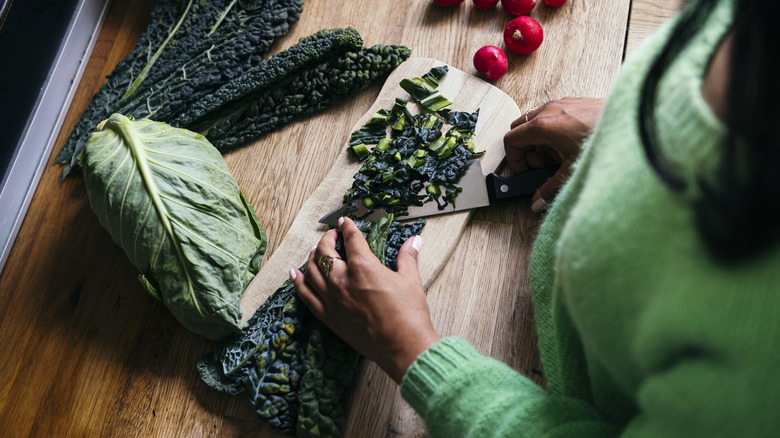Don't Toss Out Your Kale Stems, Pickle Them Instead
Kale is a versatile superfood that's loaded with antioxidants and nutrients like vitamins K, C, A, manganese, and riboflavin. And when we speak of all the healthy benefits of kale, that includes the stems, too — the part that usually ends up in either the trash or compost bin. But what exactly are you supposed to do with those chewy, fibrous leftover bits? The good news is that kale stems have surprisingly delicious potential and can help you curb food waste to boot.
While you can braise leftover kale stems into a simple side dish of their very own, there's another way to use up those leftover kale stems: You can pickle them. Perfect for a quick snack or as a mix-in for tacos or grain bowls, pickled kale stems are easy to make, require just a few ingredients, and help you make the most out of all of the goodness of kale.
How to make pickled kale stems
You can make pickles out of any type of kale stem you happen to have on hand. After washing the kale and removing the leaves, chop the stems into bite-sized pieces or to fit the length of your jar, if you want them to be a bit longer. Following a classic pickle recipe is probably the easiest way to start with a foundation, but feel free to experiment by adding flavor boosters like mustard seeds, coriander, fennel seeds, fresh herbs (like thyme or rosemary), or even jalapeño slices.
For the best flavor, let the pickled kale stems sit in the fridge for a day or two to allow the brine to absorb. Then, they're ready to go. You can eat them as-is for a salty-sour-slightly sweet snack, or you can use them in the same applications you would for any regular pickles: As a bloody mary garnish, sliced up for sandwiches, chopped and mixed into dips or deviled egg filling, or however else your heart desires. Sealed and stored in the fridge, your kale stem pickles should last a few weeks to a month.

